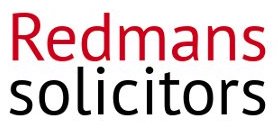Primary infringement – performing, showing or playing a copyrighted work in public
In the latest of our posts relating to the types of infringement of copyright, this post examines the primary infringement of performing, showing or playing a copyrighted work in public under s.19 of the Copyright Design and Patent Act 1988 (or “CPDA 1988”). This post will be divided up into the following two areas:
- An explanation of the primary infringement of performing, showing or playing a copyrighted work in public, which will include worked examples of when primary infringement may or may not occur
- Practical tips for both owners of copyright and potential infringers
The primary infringement of performing, showing or playing a copyrighted work in public
Performing, showing or playing a copyrighted work in public without the consent of the copyright owner is unlawful under s.19 of the CPDA 1988. Under s.19 it is unlawful:
- To perform a literary, dramatic or musical copyrighted work in public (“the performance right”); or
- To play or show a sound recording, film or broadcast in public (“the playing right”)
“Performance” can range from anything from a lecture at a university, to a school play, to a tribute band performing in their local pub. It has a wide meaning and persons who are imitating or actually performing a copyrighted work should be wary that they are not infringing upon the copyright owner’s rights. Performance also includes any mode of visual or acoustic presentation of the copyrighted work, including presentation by means of a sound recording, film or broadcast (s.19(2) CPDA 1988). The performers are normally liable in such circumstances for copyright infringement i.e. the members of the tribute band.
Playing or showing a sound recording, film or broadcast in public is pretty much what it says on the tin. For example, a showing of a popular children’s film in a school environment would infringe upon the copyright holder’s playing rights. Even a record shop that plays the records that it sells to attract customers would infringe upon the owner of the copyrighted work’s rights under the CPDA 1988. Commercial establishments therefore have to be very careful when playing or showing a potentially copyrighted work. They should seek to obtain a licence to play the particular work from the relevant business or individual. If they do not then they may be liable for copyright infringement under the CPDA 1988.
So, who are the public for the purposes of this statute? The definition of “public” is a potentially wide one and will differ dependant on the facts of the particular circumstance. However, family and domestic situations are generally not held to be a “public” environment.
Practical tips for copyright holders and potential infringers
Potential infringers
- Those most at risk of copyright infringement (i.e. bars, restaurants etc.) should seek to obtain a licence to play a copyrighted work from the relevant business or individual
Copyright holders
- Ensure that your rights in your work are upheld. If you learn of any potential infringement get specialist legal advice to find out how to protect your rights
